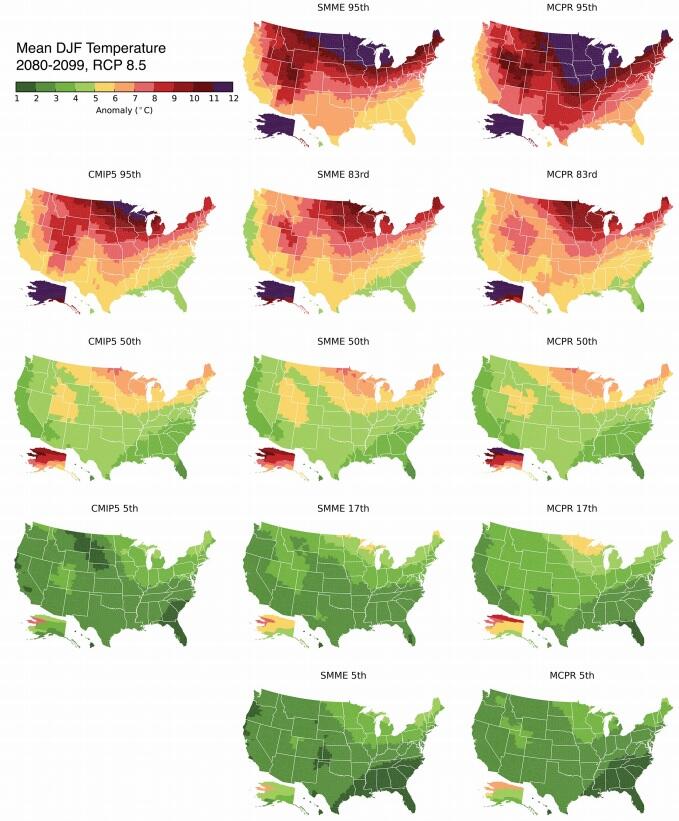Probability-weighted ensembles of U.S. county-level climate projections for climate risk analysis

Authors: D.J. Rasmussen, Malte Meinshausen, Robert E. Kopp
Abstract:
Quantitative assessment of climate change risk requires a method for constructing probabilistic time series of changes in physical climate parameters. Here, we develop two such methods, Surrogate/Model Mixed Ensemble (SMME) and Monte Carlo Pattern/Residual (MCPR), and apply them to construct joint probability density functions (PDFs) of temperature and precipitation change over the 21st century for every county in the United States. Both methods produce likely (67% probability) temperature and precipitation projections consistent with the Intergovernmental Panel on Climate Change's interpretation of an equal-weighted Coupled Model Intercomparison Project 5 (CMIP5) ensemble, but also provide full PDFs that include tail estimates. For example, both methods indicate that, under representative concentration pathway (RCP) 8.5, there is a 5% chance that the contiguous United States could warm by at least 8°C. Variance decomposition of SMME and MCPR projections indicate that background variability dominates uncertainty in the early 21st century, while forcing-driven changes emerge in the second half of the 21st century. By separating CMIP5 projections into unforced and forced components using linear regression, these methods generate estimates of unforced variability from existing CMIP5 projections without requiring the computationally expensive use of multiple realizations of a single GCM.
Link to full article: http://arxiv.org/pdf/1510.00313.pdf
(Submitted on 1 Oct 2015 (v1), last revised 5 Oct 2015 (this version, v3))